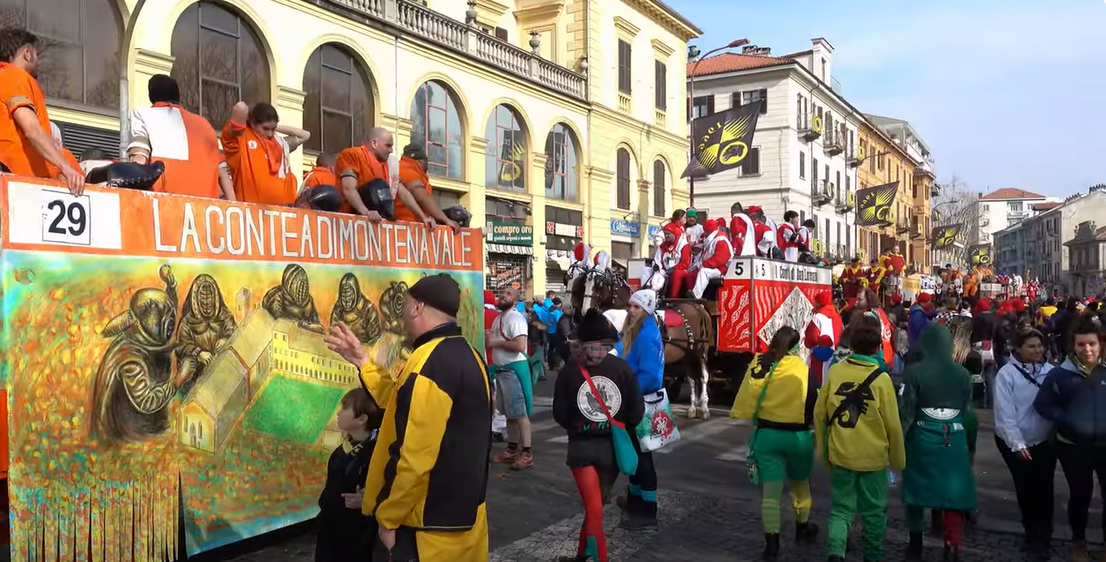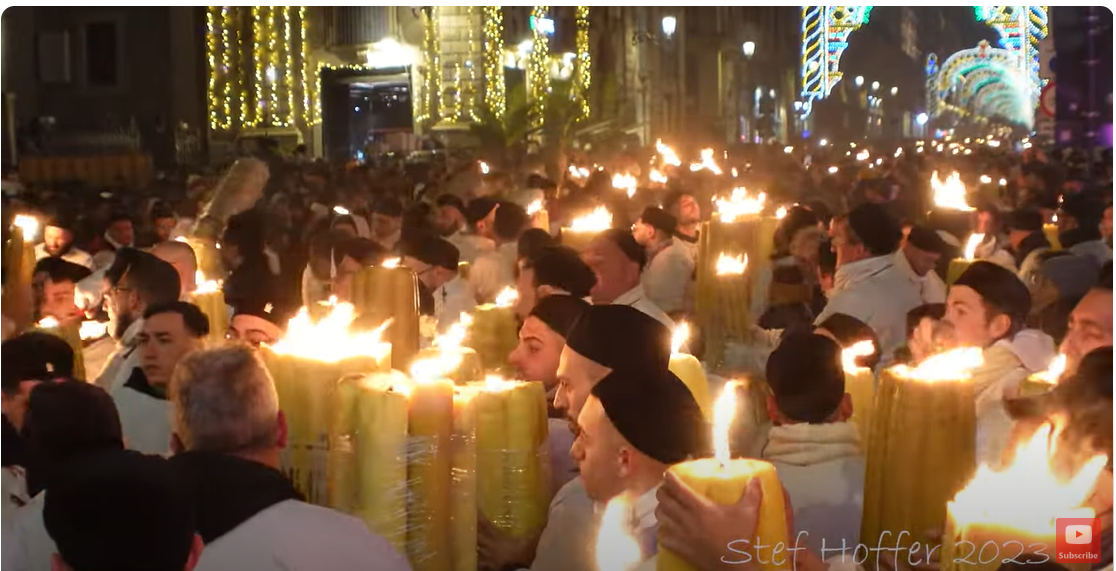As Carnevale approaches in the runup to Lent and then Easter, Italy comes alive with festivals in February. In the US the biggest such event is New Orleans’ Mardi Gras, but in Italy many cities have their own versions as they celebrate the last fling before Lent puts an end to fun and self-indulgence, ushering in the reflection and gravity of preparing for the most solemn days of the Catholic calendar.
Carnevale comes 40 days before Easter, so the date changes each year (and festivals can sometimes start in January) depending on the date of Easter. The biggest Carnevale celebrations last for several weeks. Although Venice and Viareggio have the most well-known celebrations, Carnevale is celebrated all over Italy in a variety of ways. These are some of the more unusual Carnevale celebrations.
The Battle of the Oranges in Ivrea
If you love oranges and a good fight, you might want to check out Ivrea’s Orange Festival in Italy. It’s a three-day event where thousands of people throw oranges at each other in a massive street battle. The festival is a tradition that dates back to the 12th century, when the people of Ivrea rebelled against a tyrannical lord who tried to claim the right to sleep with any newlywed bride on her wedding night (the so-called “droit du seigneur”).

Following tradition, a local woman is chosen each year to represent Violetta, the bride, with her identity remaining mysterious up to the battle, when the big reveal takes place. As tradition would have it, the brave bride chopped off the Seigneur’s head and sparked a revolt that ended the lord’s rule. The orange throwing is a symbolic reenactment of the uprising, with different teams representing the townsfolk and the lord’s guards. Violetta, called Vezzosa Mugnaia, or Charming Miller, travels through Ivrea during the festival in a gold horse-drawn chariot, wearing a white dress, red cap, and green sash. As she passes by the crowds, she’s cheered on and throws candy to spectators. Teams in horse-drawn carts represent the tyrant and his supporters, and teams on the ground are “commoners” who throw oranges at the carts. Though exciting, the passion of the people engaged in the mock battle is such that some come away with bloody noses, black eyes, cuts and bruises.
The festival also features parades, music, costumes, and plenty of food and drink. It’s a fun and chaotic way to celebrate freedom and community spirit.
The Celebration of Saint Agatha (Sant’Agata in Italian) in Catania
Saint Agatha, a martyr who died in 252 CE at age 15, is the patron saint of Catania, Sicily, and an exciting festival is held in her honor in the city. The two-day procession, said to be the second-largest religious procession in the world, begins February 4.

Following a mass at dawn, the statue of Sant’Agata that houses her relics is placed on a fercolo, a 40,000-pound silver carriage, that is pulled up Monte Sangiuliano by 5,000 men. The huge festival lasts for two days and two nights. As with most Italian festivals—even the solemn, religious ones– there is also plenty of eating and drinking and a huge fireworks display at the end.
The Feast of San Biagio
February 3 is a minor celebration everywhere in Italy. Saint Biagio is the patron saint of the throat. It’s a tradition to eat panettone left over from Christmas with a glass of wine to bless your throat. According to legend, the saint is believed to have the power to heal throat diseases because he saved a child from a fish bone stuck in his throat during his martyrdom.

San Biagio was a physician and bishop of Sebaste, Armenia, who was tortured and beheaded by order of Emperor Licinius in the fourth century. In some places, Saint Biagio Day is celebrated with parades, music, a special mass, or bonfires. In Mugnano di Napoli, near Naples, there’s a massive fireworks display as its the home of one of the biggest fireworks companies in Italy.
Venice’s Carnival
Of course, the most well-known of the feasts in the runup to Lent is Venice’s carnival, one of the most colorful and festive events in the world–certainly an impressive rival to Mardi Gras in New Orleans. It’s a celebration of the city’s history, culture and art, where people dress up in elaborate costumes and masks, and enjoy music, dancing and entertainment.

The carnival dates back to the 11th century, when Venice was a powerful maritime republic, and it was a way for the citizens to express their freedom and creativity. The carnival lasts for about two weeks, and it culminates with the Mardi Gras, or Fat Tuesday, the day before Ash Wednesday. The highlight of the carnival is the contest for the best mask, which is judged by a panel of experts and celebrities. The masks are usually inspired by historical figures, mythical creatures or animals, and they can be very intricate and expensive. Some of the most famous masks are the Bauta, a white mask that covers the whole face, the Moretta, a black oval mask that is held by biting a button, and the Medico della Peste, a beaked mask that resembles a plague doctor.












